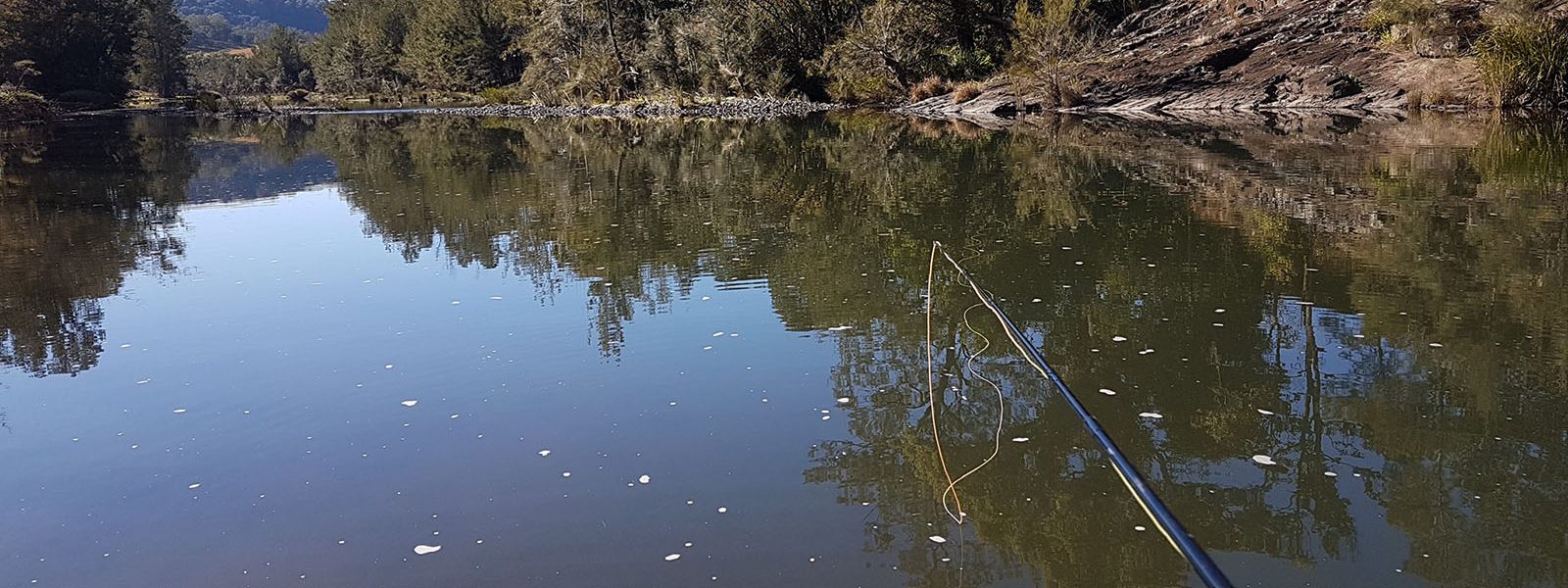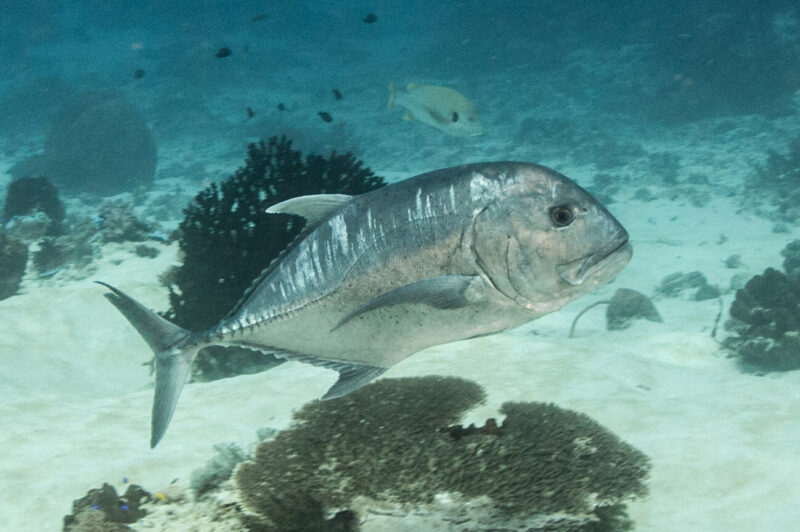Giant Trevally

The Giant Trevally, or GT, is the largest trevally of the Indo-Pacific Region growing to a verified size of 170 cm (67 in.) and a weight of 80 kg (176 lbs.) Once known as the Lowly Trevally – a direct translation of its scientific name (ignoblis) it is often confused with the Turrum Caranx Emburyi. However the Turrum and the GT are readily separable on some major points of anatomy: the breast of the Turrum lacks tiny scales up to the base of the pectoral fin, while the GT has a small oval shaped patch of minute scales in the centre of a much larger scaleless area. Other major differences are in the number of rays in the second dorsal fin (25-30 in the Turrum, 18-21 in the GT) and the number of hard bony scutes on the lateral line, towards the tail (15-21 in the Turrum and 26-38 in the GT). Fish over 26 lb. are almost certainly Giant Trevally.
The giant trevally inhabits a wide range of marine environments, from estuaries, shallow bays and lagoons as a juvenile to deeper reefs, offshore atolls and large bays as an adult. Fortunately on the flats where most fly fishermen chase GTs they average “just” over 40 inches in length and nearly 30 pounds.
GTs have a steeply sloping head, long pectoral fin and sharp flutes on tail. The colouration of adult GTs can vary from silvery to grey with irregular spots or light and dark bands on the dorsal region of the flanks, to almost uniformly black with fish greater than 50 cm showing sexual dimorphism in their colouration, males having dusky to jet-black bodies, while females are a much lighter coloured silvery-grey.
Most fly-fishing for GTs occurs with 11 and 12-weight rods. Reels for Giant Trevally fly fishing must be large arbor to aid in quick line retrieval and hold at least 300 yards of 80-pound braided backing with an 11, 12, or 13-weight fly line. The reel also requires a quality drag system, and its ability to get to maximum stopping power as fast as possible is crucial.
Most brands have specific GT lines which are stronger and have more durable cores. A heavier core holds up better in hot saltwater environments and may be less likely to get cut on coral heads. Self-made 9-foot 80 or 100-pound fluorocarbon leaders and tippets should be used.
Flies should be big, full-bodied and match the available prey and some favourites are EP’s GT’s Baitfish, Black Brush Fly and the GT Semper Fly. Other common flies such as the Crease fly. Deceivers, Things (particularly black), Clousers and large poppers are also popular.

